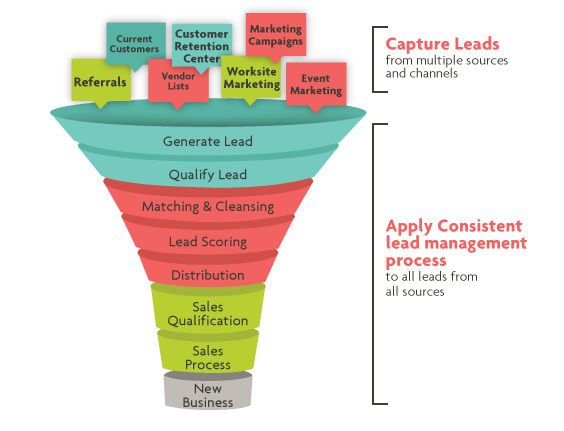The famous author and motivational speaker, Zig Ziglar once said, “You are out of business if you don’t have a prospect”.
Undoubtedly, it is extremely important that you continuously have prospects that are interested in your offering, to reach out to and convert into paying customers. That’s the only way you keep growing. Having said that, it is equally to engage with these prospects in the right way at the right time, to ensure that they actually become your customer.
You may know the right way to talk to a prospect or to engage them, but can you keep following the same flow when you scale from 50 to say, 500 customers? If you leave all the tasks of getting, engaging, and managing prospects to your manpower, they’d probably get exhausted and frustrated. Now just that, the pace at which you grow would be rather slow.
That’s where you need to put in a process behind your efforts to make them more organized such that they can reap better results. This is where ‘lead management’ comes into the picture and can really help you handle your ‘leads’ netter. Let us introduce you to lead management and discuss what the process of dealing with leads looks like.
What is lead and lead management?
It’s always better to get the basics right. For the unacquainted, a lead is essentially every person that shows the faintest of interest in your brand, product, or the service you offer. In simpler words, a lead is a potential customer or the prospect we talked about earlier.
The process of acquiring a lead, communicating and captivating them, tracking their activities and behavior, assessing their quality, so that they’re ready to be handed over to the sales team is called lead management. That’s probably too much to digest in one go. Let’s go over the step-by-step lead management process.
Lead Management Process–6 Steps To Managing Leads
Step 1: Lead Generation and Lead Capture
In this step, you reach out to your target audience and try to engage prospects that are interested in your offering. At this step, you capture the demand in the market of people who’re already looking for a product or service that’s similar to what you offer a.k.a lead capture. At the same time, you build excitement amongst those who’re not actively seeking but might get interested in your offering a.k.a lead generation.
Step 2: Lead Qualification
Categorizing your lead as per the contact that’s been made with them. This defines the stage of communication that has been made with the lead. A marketing contact with the lead is termed as a Marketing Qualified Lead (MQL). Similarly, a lead that has been contacted by the sales team is known to be a Sales Qualified Lead (SQL).
Step 3: Data Cleansing
This happens simultaneously with lead qualification where leads with incorrect information or spammy leads are filtered out. Any leads which have an invalid email id, duplicate contacts, or incorrect phone numbers are removed from the pipeline so that the marketing and sales team have clean data to work with.
Step 4: Lead Scoring
Adding a score to the lead to determine their sales-readiness. This way, the sales team knows which leads to contact first and prioritizes accordingly. Lead scoring is done on the different factors including the user person, decision making powers of the user, their eagerness, and sometimes even based on the size of the purchase that is expected from them.
Step 5: Lead Distribution
Assigning the leads to the sales team members based on their expertise. At this point, leads that are not high up the priority ladder are assigned to marketing to engage and warm-up for later.
Step 6: Lead Nurturing
Nurturing cold leads or not so proactive leads as per sales qualification to convert them in the longer run. At this step, the cold leads are kept engaged with the brand through informational content that’s not focused on convincing them to purchase but to like the brand in general.

At each step of the process, you track your lead’s behavior to know how willing they are to convert and prepare them for the sales team to take over. Evidently, there’s a lot to be done to ensure that your lead management is efficient and effective. You have to send in emails, prepare lead information collection forms, scrap data to check its validation, and score them too.
What if we told you that you could offload a major chunk of this process to a tool? If you do so, you can focus more on strategy than execution and get better results. This is where we come into the picture–Engage CRM, a tool to help distributors and growing businesses manage leads better.
Introducing Engage CRM
Engage CRM consists of a comprehensive set of solutions that work together to automate your business functions and make them more efficient. We offer several business modules that help you make your business processes easier and more streamlined. While each tool is designed to help every business out there, Engage CRM is the only CRM that caters exclusively to distributors, first and foremost.
Out of all the tools we offer, our Customer Relationship Management (CRM) software is what you’d need for lead management. It has features that can help at each step of the lead management process that can make your work more efficient and quick.
If you’re looking to convert your leads into customers faster, do explore our CRM module.

